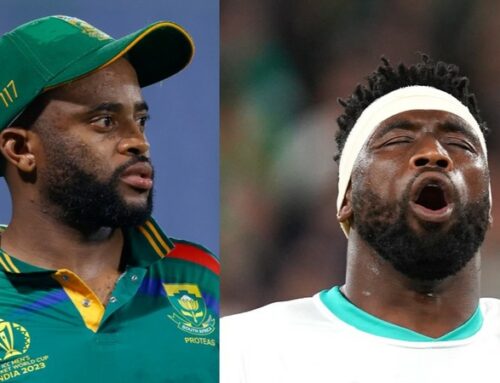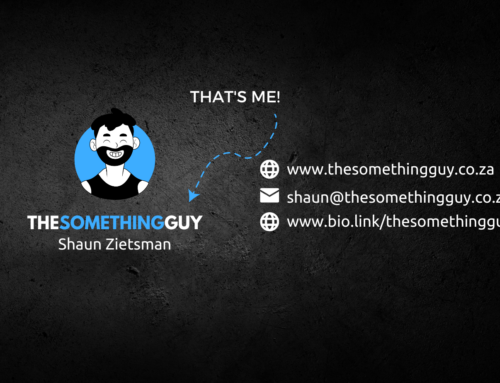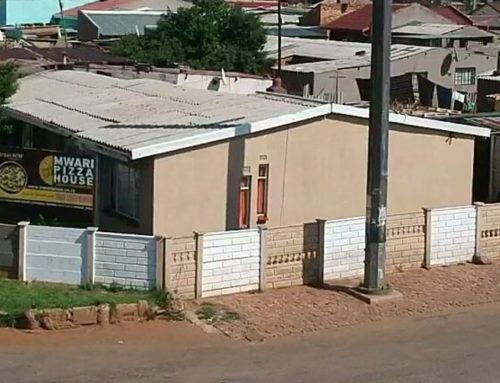We need more Diversity!
If you are a white person living in the Western Cape then it can become fairly easy to believe that white people make up the majority of people in the province and be extension, the country.
The reality, though, is that we make up closer to 16% of the province and less then 8% of the country. So there has to be a certain degree of intentionality [or maybe lack thereof] that sees you as a white person inhabiting white spaces that gives birth to that lie.
BEWARE THE BUBBLE
There are white families living in Bergvliet, for example, who live in such a way that the only black or coloured people they encounter will be those who are in a relationship of service to them [person who cleans their house, works in their garden, packs their groceries, fills their car with petrol etc] Their children never need to be actively taught that white people are superior, because their lived-out experience will constantly be sending that message to them -black and coloured people are here to serve me. If that is not interrupted somehow, it makes absolute sense that this will be a natural belief for them.
So into that context and those like it, we have been speaking Diversity.
When there is little or no Diversity happening, then Diversity can feel like the end goal.
But this diagram helps to remind us that it is not:

It’s not a perfect image, and we can get hung up on the definitions, but like any analogy, it is as strong as the point it is trying to make, so let’s take from it what we can without being picky.
In this diagram, Diversity would probably look like the picture they have with Integration. So with a group of people we now have Diversity because all the different colours are represented, but the circle is still favouring the one colour and all the other colours are keeping to themselves.
This is not the ideal end goal, but i would go as far as saying it is somewhat better than a context free of Diversity, where you only have dots of one colour present.
FROM DIVERSITY TOWARDS INCLUSION AND BELONGING
i shared this pic on Sunday with a specific focus on church gatherings with these words:
Turns out Diversity is not the solution we are looking for, but rather Inclusion (which Diversity is a part of) – Diversity without Inclusion is merely window-dressing and a deeply problematic form of subtle oppression while massaging the conscience.
Churches in South Africa, and specifically Cape Town. As you gather today, ask yourselves honestly how you are doing on this.
If you are not diverse at all (specifically white only or mostly churches in a country where we make up less than 8% of the population) you should be asking yourself (and more particularly your leaders) some very firm questions.
When you look diverse but aren’t inclusive (everyone keeps to their homogeneous groups and positions of leadership or upfrontness tend to be reserved for one particular group) then that is not good enough.
If you look diverse and seem inclusive but those making the decisions in the running of the place are all white (or if there is an invisible but very real ceiling as to how far black, coloured and Indian people can move on the leadership structures) then you are very likely not doing the necessary work somewhere.
Diversity and Inclusion sounds a lot more like the Kingdom of God i signed up for…
My friend Nigel Branken jumped on to add some helpful words and definition clarification:
In our anti-racism training we talk about moving from
1. Diversity to Transformation
2. Equality to equity
3. Inclusion to belongingWith inclusion, there is still someone doing the including. Power needs to shift. It is the difference between including me as a visitor in my home and jointly sharing our home. We set the rules together.
Equality: The state of being equal, especially in status, rights, or opportunities.
Equity: The quality of being fair/just.
Inclusion: Apart from, while given access and/or rights.
Belonging: A part of, as a result of undergoing a transformative process in which diverse needs are designed into the new systemic way of being.
Again, let’s not get caught up in the words used, but rather let’s focus on the understanding behind them.
Personally when i posted my status i was using the word Inclusion but thinking of it as Nigel’s definition of Belonging [which is why taking time to define words in race conversations can often be valuable and help people arrive on the same page] with the idea that it goes beyond the Diversity idea of having people of different colour in the room.
WHO HOLDS THE POWER?
Nigel asked another question which is really helpful when taking this conversation further and that is looking at who holds the power. When we continue with the church context that i posed this question to, there are a number of churches around Cape Town that looks diverse [have white, black, coloured people in them] but not quite as many that have black or coloured people leading them. Beyond that, the very style of the meeting tends to be a western typically-white flavoured meeting which black and coloured people are expected to adhere to or assimilate into with not a lot of work being done to ask what would work for the coloured and black people who are part of our group. So power starts to play a huge role here – Who chooses the songs? Who gives the message? Who do we see on stage? Who makes the decisions about the life of this group?

That graphic helps illustrate a positive relationship or perhaps journey between Diversity, Equity and Inclusion/Belonging and if every church/business/sports club in Cape Town took this as their guide for the next year and simply worked on getting better at those three aspects, i imagine we could do some serious work in turning things around for the better.
Fern Mandelbaum, a Stanford Business School lecturer who specialises in entrepreneurship and inclusion, wrote an article titled, ‘To Become More Diverse, Start Being More Inclusive’, which is a helpful read and included these two suggestions:
[1] Check for Unconscious Bias
[2] Commit to Expand your Networks
It is a fact that is is easy to stick with what we are familiar with. So we have to start becoming more intentional if we want to see different results.
For the second point above, this is quite an easy one to change. Start by being more intentional about the spaces you inhabit – starting with restaurants and entertainment spots and hangout spots and even exercise spots, and then things like where you shop and where you meet people for a drink and where you exercise. This is quite an easy thing. If the gym you are part of is all-white and there is a gym ten minutes away that is more diverse, then add ten minutes to your routine for an easy added benefit.
To take it to the next level, be conscious about who you invite yo eat with you. One of the best ways to make friends and deepen relationships is to invite people to a meal at your house. As board game enthusiasts that is another way we have found to bring people together. But if sport is your vibe then who are you inviting to watch the game with you? And so on.
Also, as a last point, if you’re going to do this thing, do it well. i can only imagine how tough it must be to be the only coloured, indian or black person in a room of white people. So don’t be that group. And certainly don’t be that group and think you’re diverse because you have one person who doesn’t look like you. Try and find a good balance of different looking people to hang out together and get to know each other. In ways that will hopefully feel life-giving to everyone in the room.
i would love to hear some stories about your journey towards diversity and inclusion and belonging if you have them… Please share in the comments below.




![The Road to the Catan World Champs in Malta 2022! [Part II]](https://brettfish.co.za/wp-content/uploads/2022/11/IMG_9944-scaled-e1669831201283-500x383.jpg)
![The Road to the Catan World Champs in Malta 2022! [Part I]](https://brettfish.co.za/wp-content/uploads/2022/11/catanchampionships-500x383.jpg)

I love the diagram explaining inclusion. The visual really helps and is really good to think about!
Thanks so much. Yes, really helps put some helpful imagery on to a complex issue…
Yes! This makes so much sense – Diversity as a focus has felt more and more like a highlighting of differences and from my NA meetings, the strength to recovery and do better at life comes from seeking out our similarities as points of connection.
Well put, Brett. I’m glad I’ve stumbled on your writing again.
Thanks Dave. Been largely not writing on here cos of the busyness of life and decided to try and get back into a more regular habit of it so really cool that you are one of the first faces that pops up. Hope you are well and thriving!
So glad you’re back into it, Brett.
Ah, thanks so much. Now to figure out how to make them more visible to the masses… #ShtupidtFacebookAlgorithms
I feel your pain!